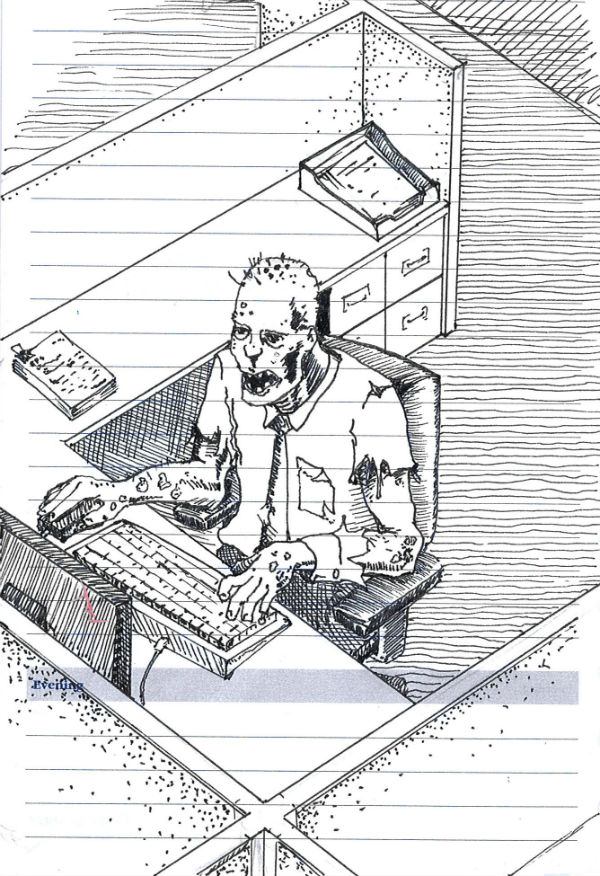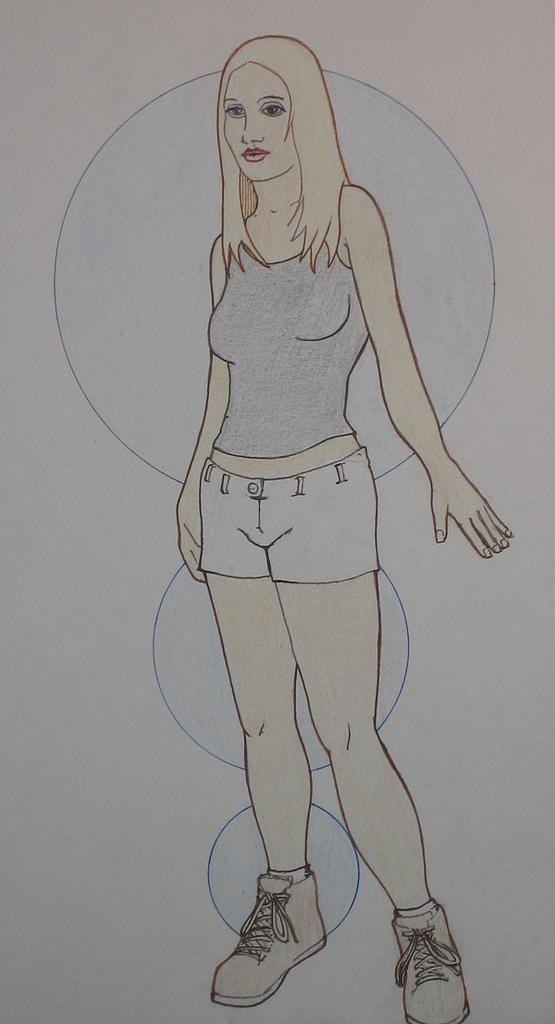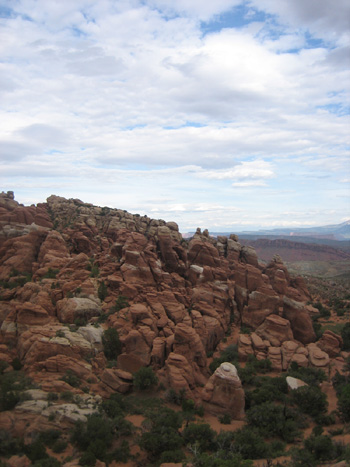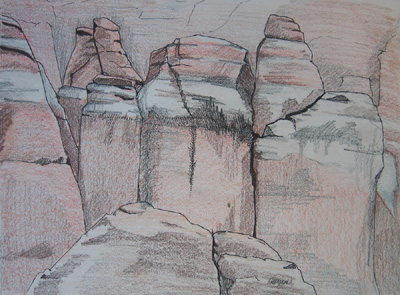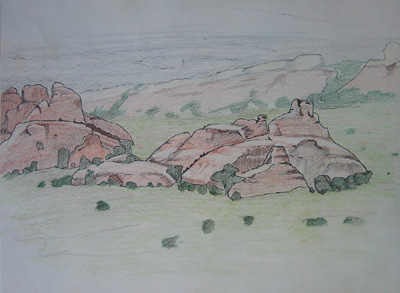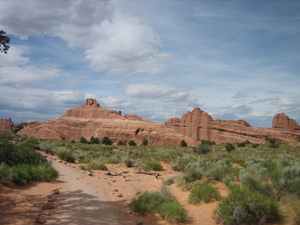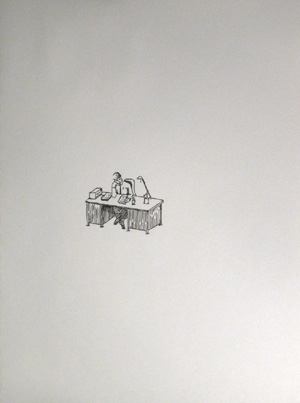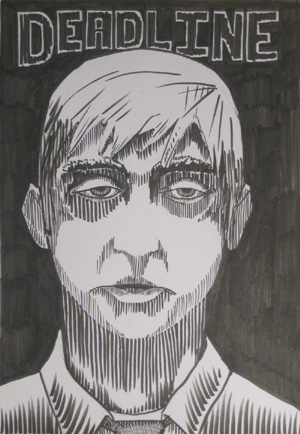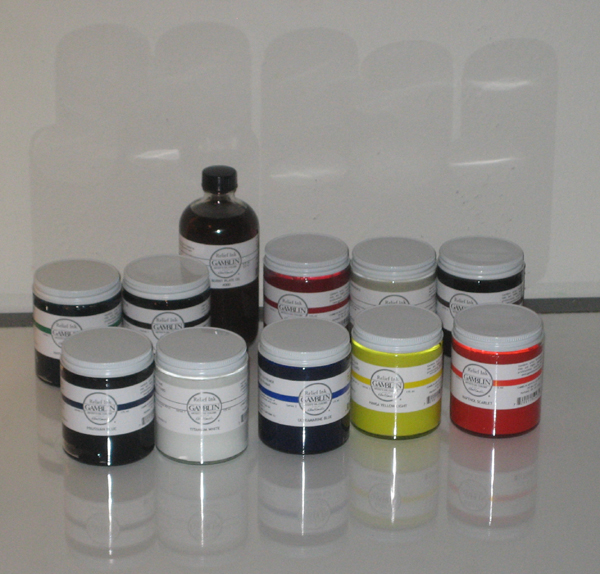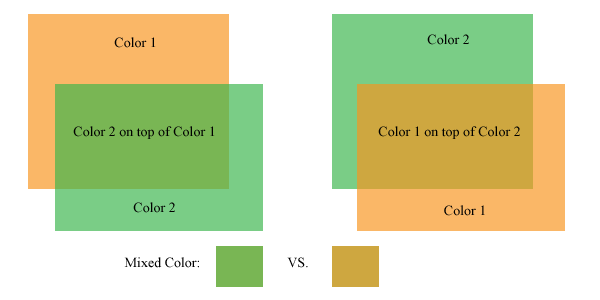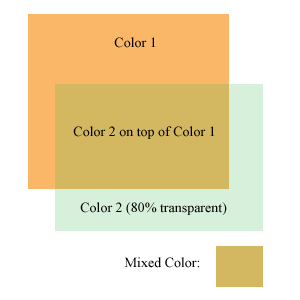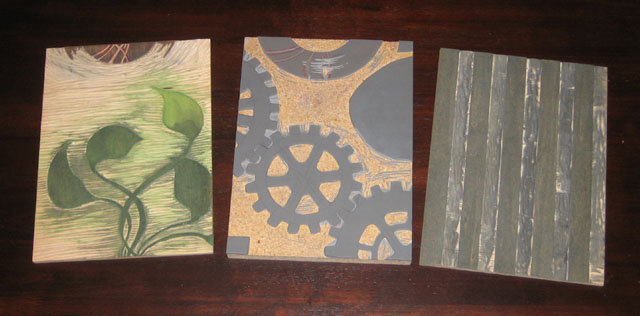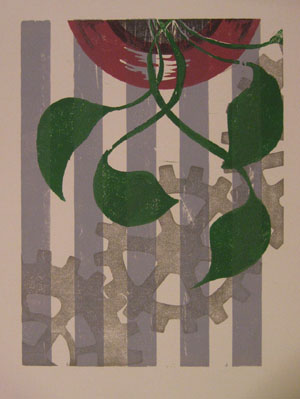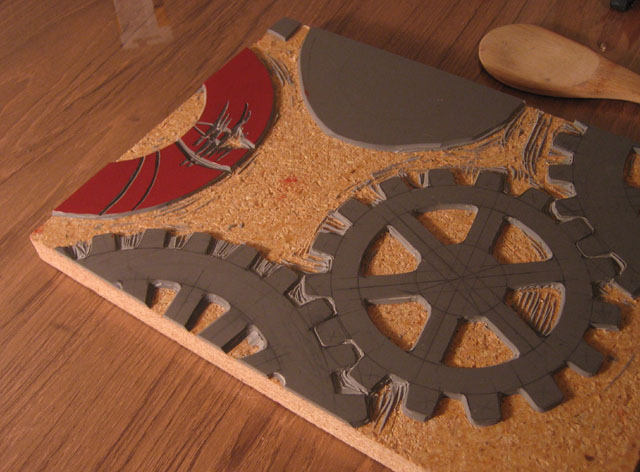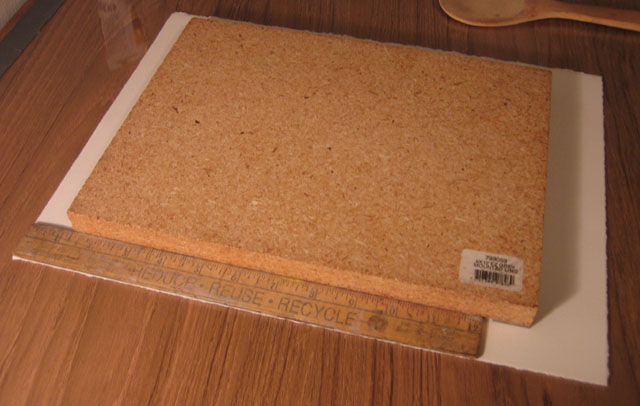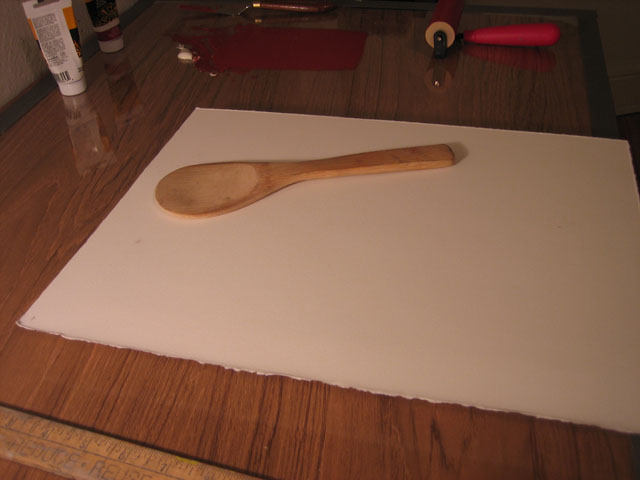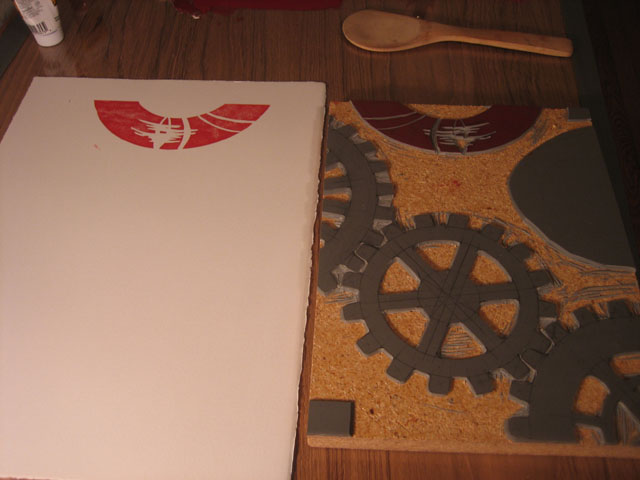Note: I spent last week in Utah, climbing and roaming around the desert in the middle of nowhere. These posts are about the things I saw, the places I climbed, and sometimes, the drawings I made. You can also read about climbing Angel’s Landing from the previous day.
From Tuesday, June 1
“This is the most beautiful place on earth.”
— Edward Abbey, speaking about the canyonlands of Utah, near Moab
I packed up camp Tuesday morning and started the 6 hour drive to Moab.
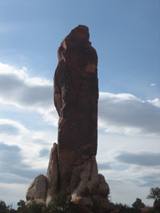
Dark Angel, at the end of the Devil's Garden Primitive Trail loop
Moab is a small city in southeastern Utah about 3 miles from the entrance to Arches National Park. From what I can tell, the primary business is catering to people visiting Arches. There are restaurants, stores selling trinkets, and all sorts of “outdoor, adventure” themed hotels.
Just before Moab, I turned up the 128 to drive along the Colorado river and find a campground. I pulled into the first one I found, Goose Island Campground, pulled into the first available site along the river, paid my fees, dropped off a chair and tent, and headed for Arches.
By the time I got to the Park, it was late in the afternoon, about 3pm. Perfect time to start a long hike. I drove the windy road through Arches, past the paved lookout points and easy, 0.3 mile paved “trail” around Balance Rock, and finally got to the end of the road, Devil’s Garden trail head.
The first mile or so are an easy, well marked trail — essentially a developed dirt road. There may even be asphalt under the rocks, dirt, and sand along the trail. This ends at Landscape arch, and it is here that I went the primitive route.
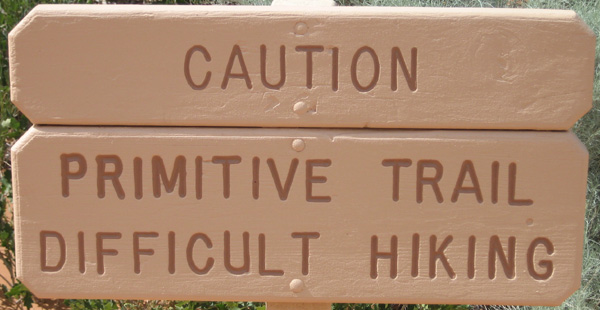
Devil’s Garden is named for it’s fins. The rock has eroded in to leave long, narrow, and closely spaced walls of rock emerging up from the ground. This leaves tall rock walls, with deep, narrow canyons in between.
It is not unlike a pod of giant rock sharks, with huge dorsal fins, swimming impossibly close together, just underground, with only their rock fins in layers of brown, orange, red, and white sticking up above the earth.
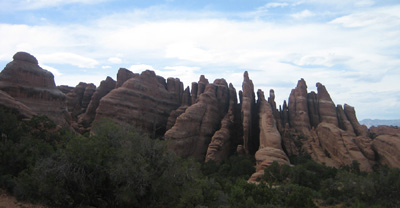
The outskirts of Devil's Garden
These fins captivate me in a way I can’t quite explain. I think it is a combination of their orderliness, their giant size, and their peculiarity that intrigues me.
The primitive trail followed a sandy trail away from the main trail, towards the Garden. Soon, I was coming to the outskirts of the fins, and detoured from the trail to walk up one of the fins.
The fin I climbed sloped gently from the ground, and I quickly made it to the high point on the far end. The wind was blowing hard, and I broke out my pad and pencil to sketch out the neatly spaced walls of rock that were in front of me.
I sat on top of this rock, drank some water, ate a granola bar, and worked with my pencils for half an hour or so before turning around to climb back down.
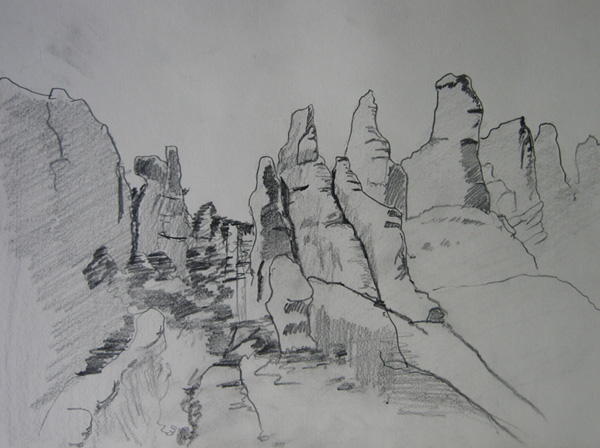
Pencil Drawing of the fins of Devil's Garden
Soon after I rejoined the trail, it led me into one of the canyons between fins, and before I knew it, I was climbing up, through valleys, over large rocks, scaling sloped rock walls, and generally working my way far back into the middle of nowhere while weaving my way through this rock garden. Climbing Angel’s Landing the previous day made me much more confident on rocks, and I leaped, climbed, scaled, and lifted my way through this magnificent Garden.
I had the trail mostly to myself, I only came across one or two other groups of folks on my way. The solitude was peaceful, and I was able to focus on my footsteps and push myself along at a reasonable pace. The Devil’s Garden trail ends at Double-O Arch, and meets the main trail out to that Arch, which I took back.
But first, I found an Angel.
The Dark Angel is a rock about half a mile past Double-O Arch. It is a tall, dark, pillar of stone that sits out alone, not part of any nearby rock formation. I got to Dark Angel around 6pm, it was time to take a break. I got out my pad and pens, to draw the angel. I figured that if anything was worthy of breaking out the ink, it is the Dark Angel.
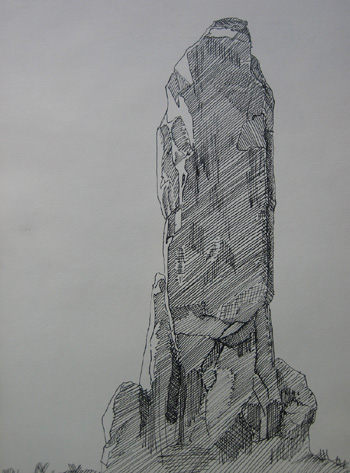
Ink Drawing of the Dark Angel
As I drew, flies, and other small, winged insects decided to repeatedly see how I tasted. I had to continually bat the flies from my face and arms.
Eventually, it was late, I was done drawing, and it was time to head back.
I took the main trail back from Double-O Arch, though it was about the same difficulty as the Devil’s Garden trail, just a shorter, more direct path. I made a few detours on the way, Navajo Arch, Partition Arch (which was so nice I would come back in a couple days), Pine Tree Arch, and Tunnel Arch.
As I walked back I thought about the Dark Angel, how it was so different from most of the other rocks out here. It sits apart from everything else, it is at the end of the most remote trail here. In a park of arches and fins of rock, it is a pillar, tall and erect, standing on its own.
I started to think of the Dark Angel as the mighty king of these canyonlands, and all of the Arches as his queens and concubines. I’m sure I can’t be the first to notice this obvious symbolism.
The sun was low in the sky when I got back to the trail head. I drank some water, and started the long drive back to camp. By the time I reached my camp, the sun had set, it was getting dark, and I was starved.
I made dinner in the dimming light, sausages and a can of split pea soup. By the time dinner heated up, I was using a flashlight to see what I was eating. I rolled out my mats and blankets in to the back of my truck, and went to sleep, under the stars, a dozen feet from the Colorado River.
Next: Threading the Needles
